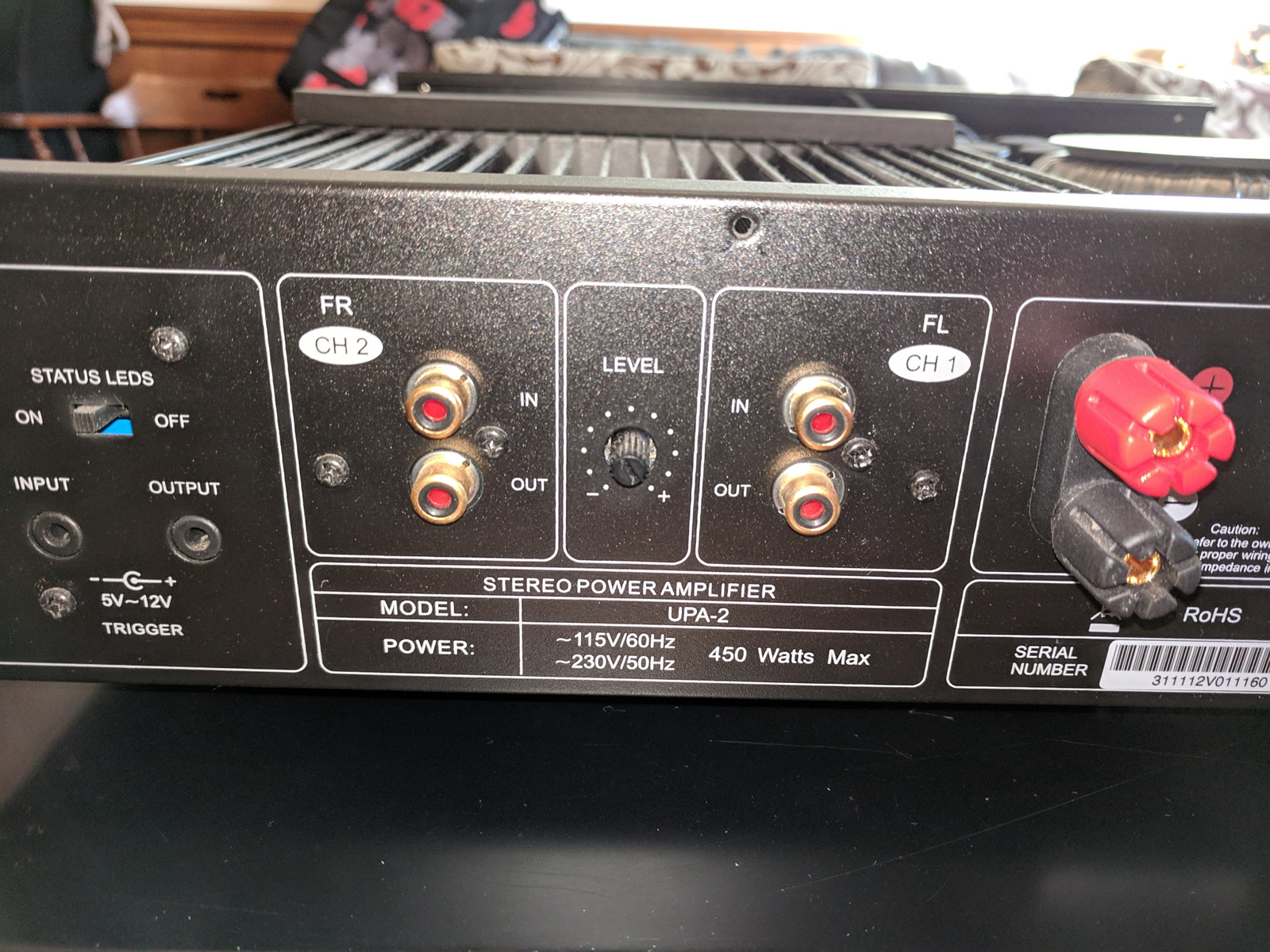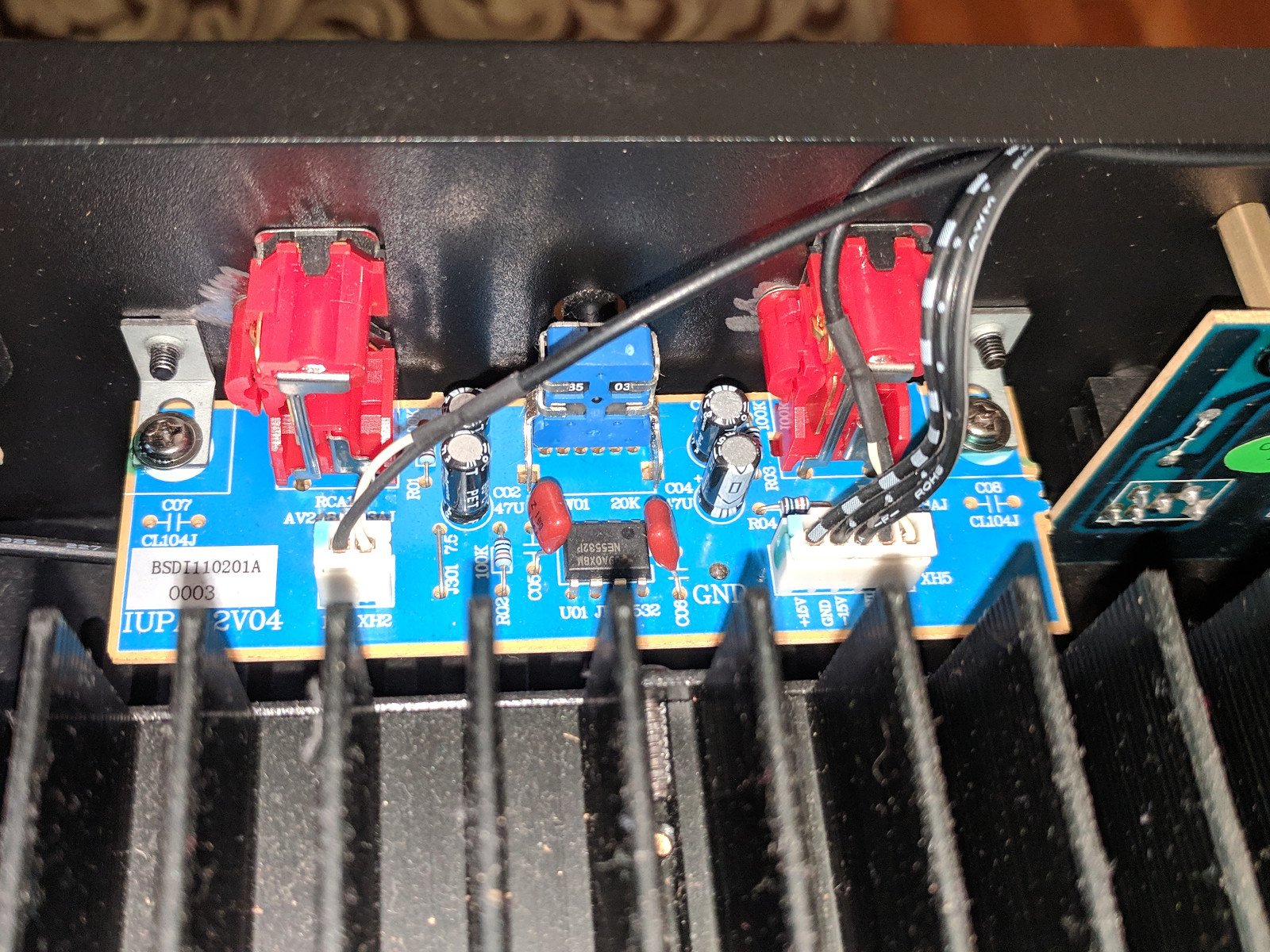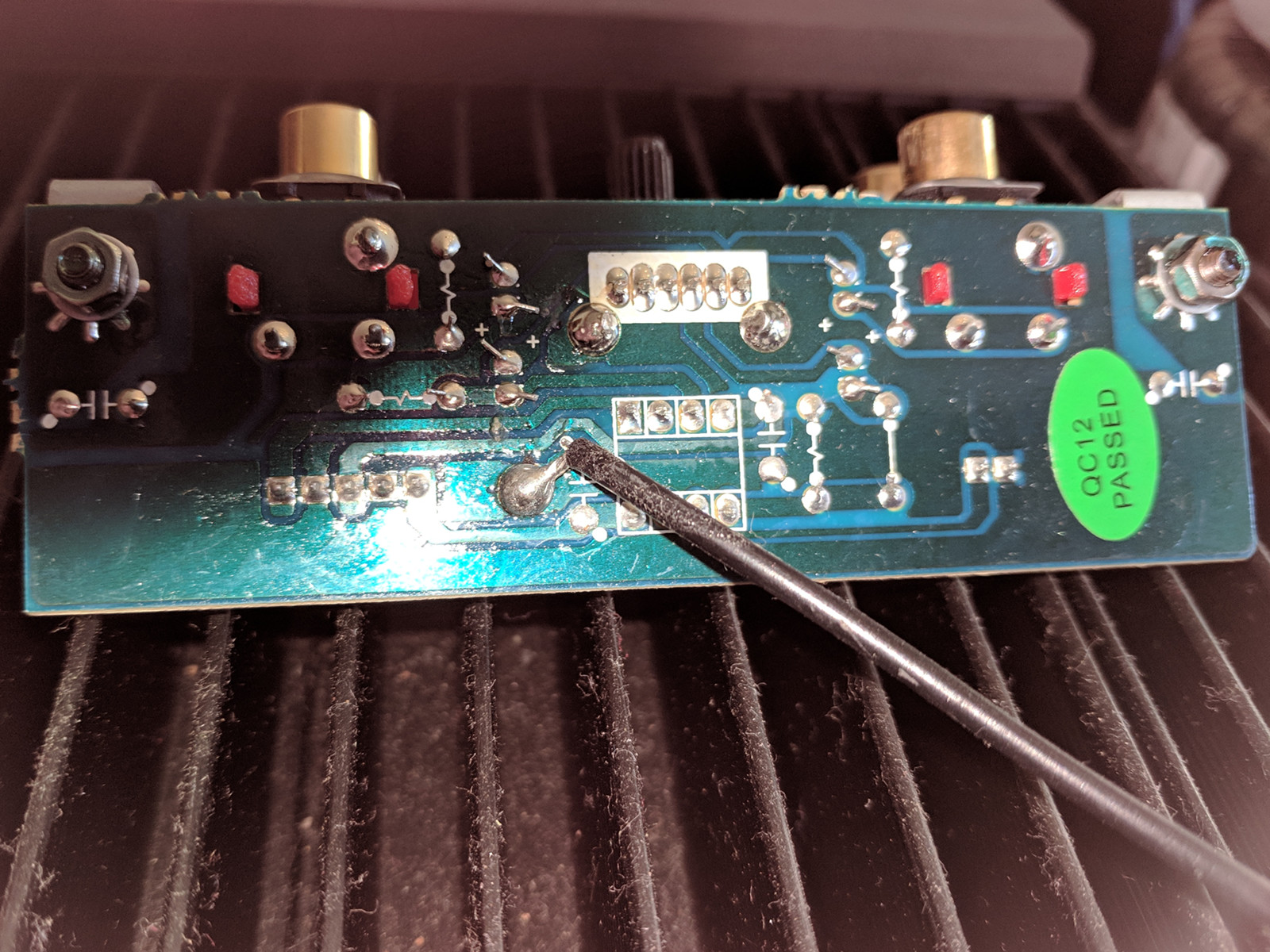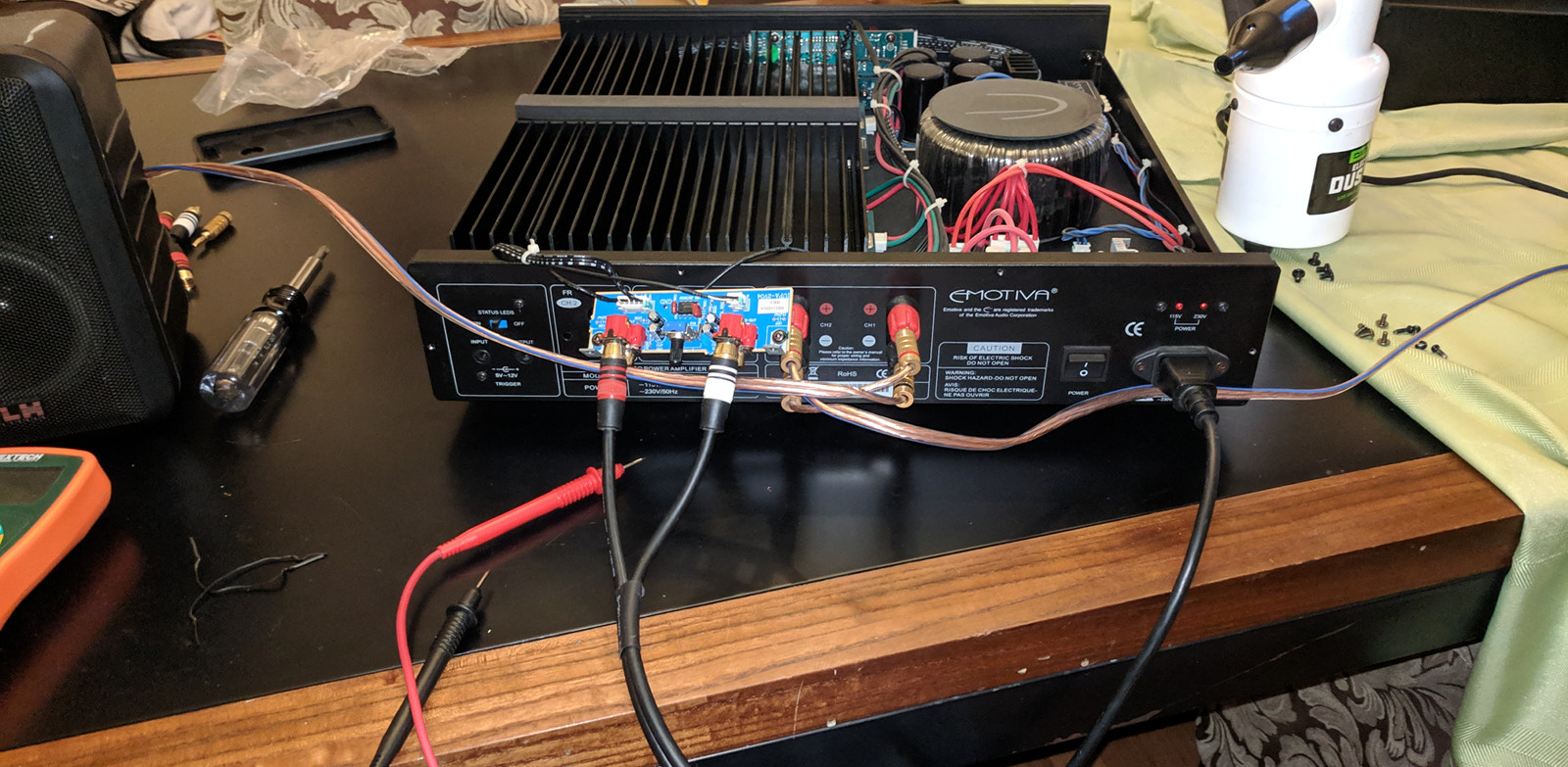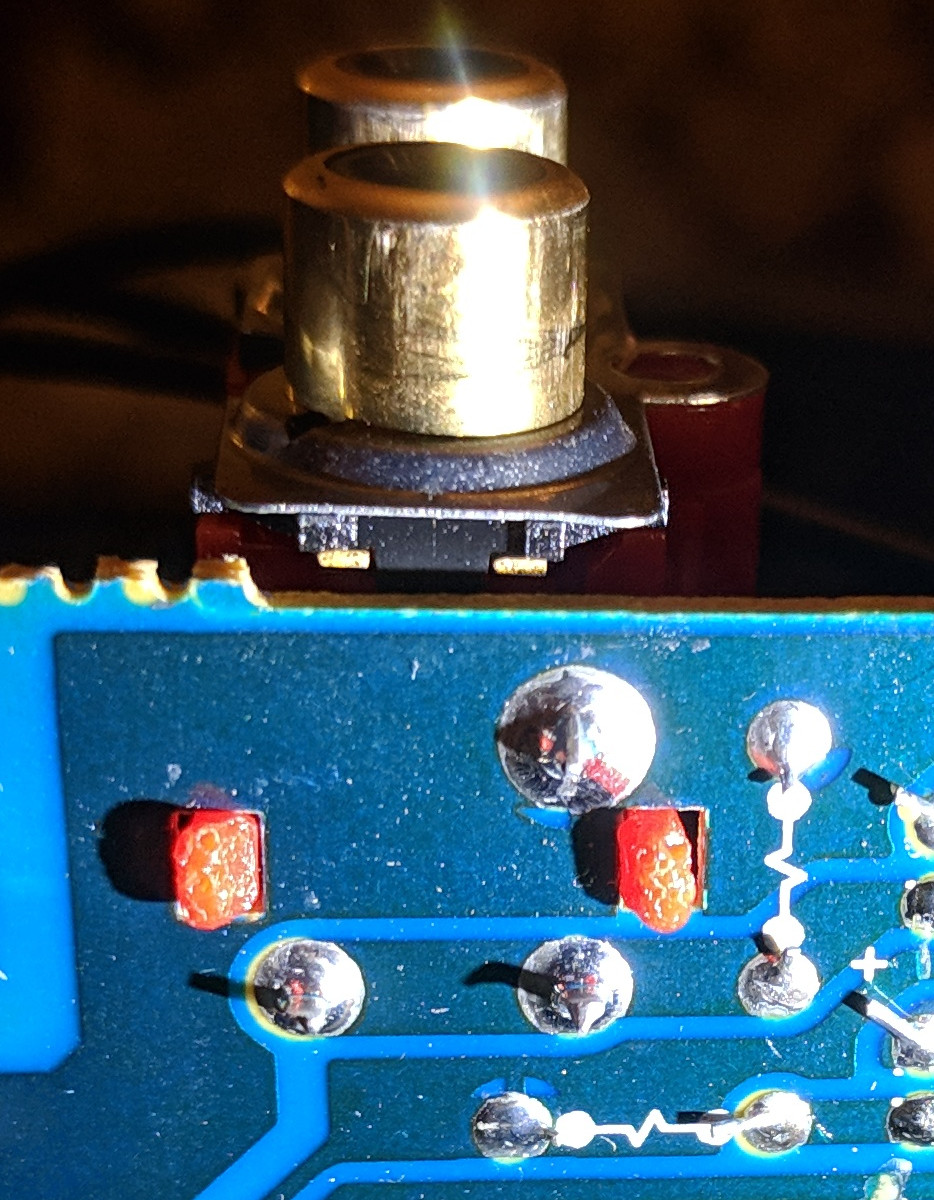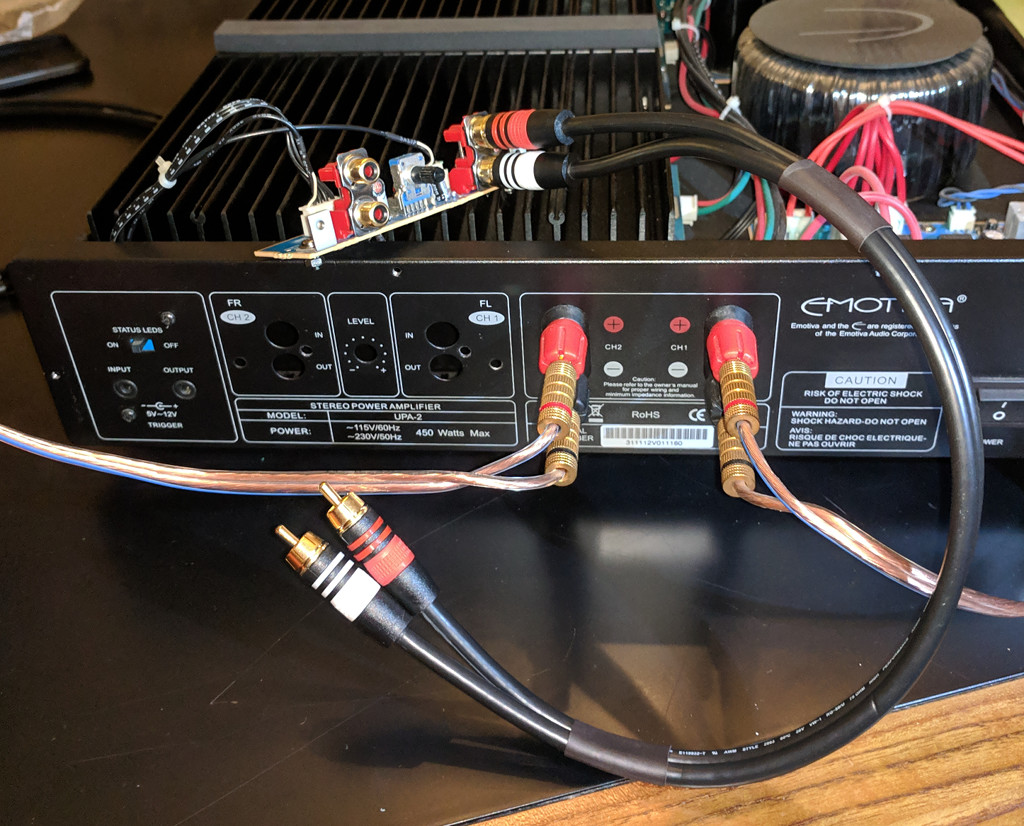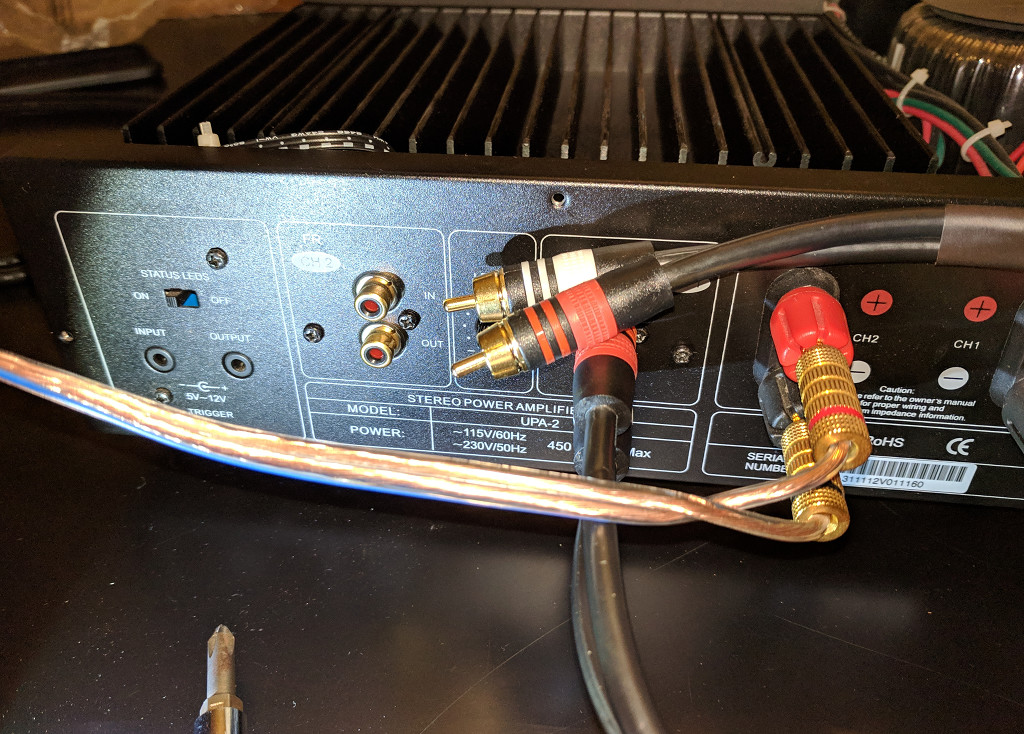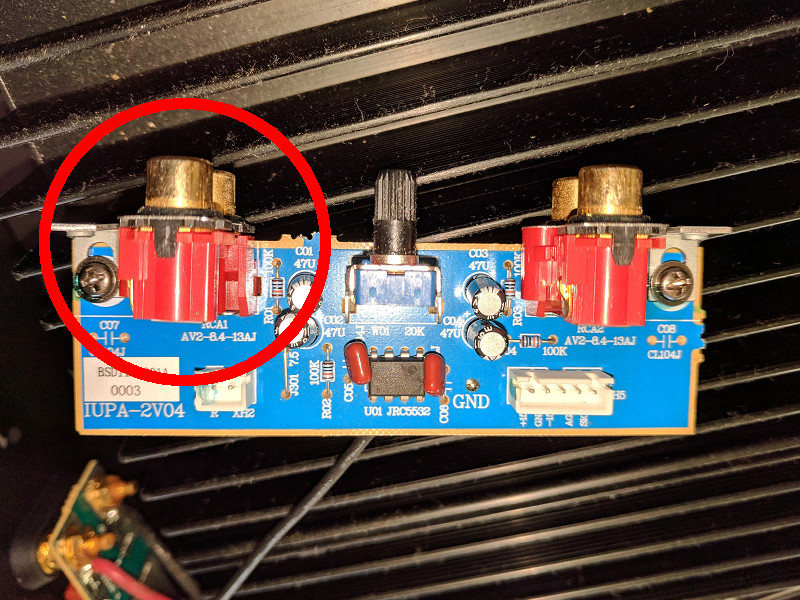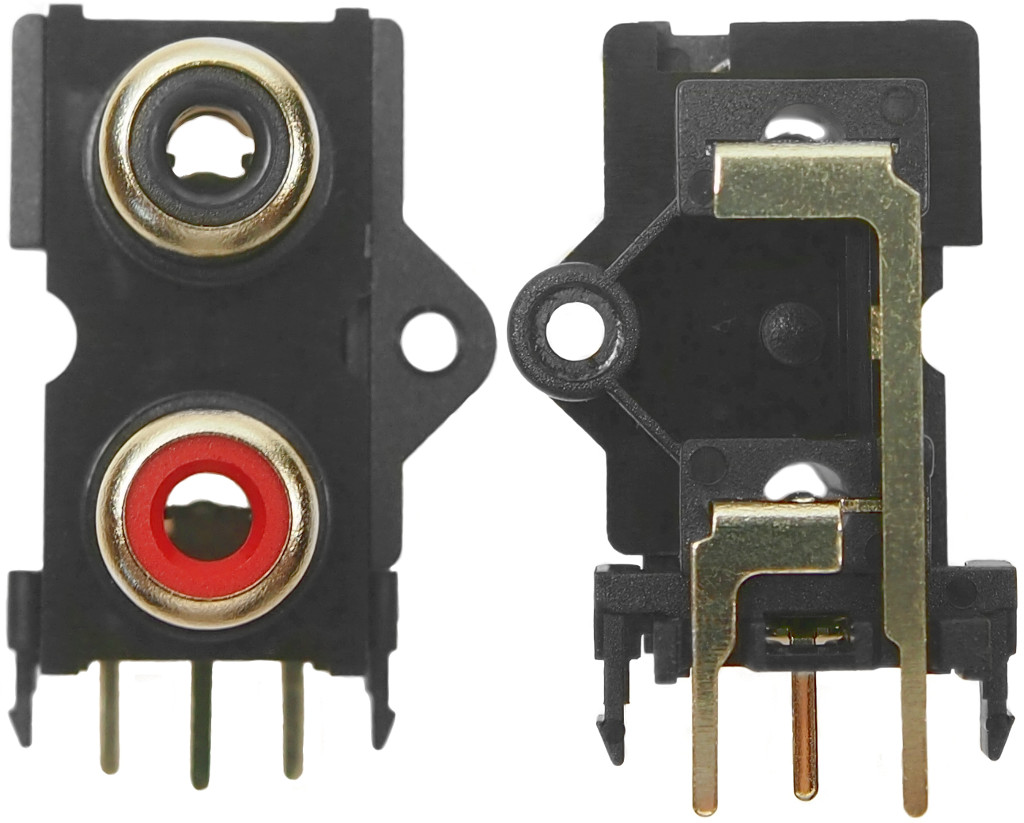Zarathustra[H]
Extremely [H]
- Joined
- Oct 29, 2000
- Messages
- 38,819
Hey all,
Almost 2 years ago, I picked up an Emotiva UPA-2 amp used on craigslist.
Up until today it had been working perfectly, until without warning the left channel just stopped working. The unit has not been dropped banged or mishandled in any other way, so the sudden loss of the left channel is perplexing me. I might have pushed it back against the wall and put pressure on one of the RCA inputs.
Currently I have it set up like this:
Schiit Modi Multibit DAC -> Sys Preamp (used as source switch) -> Schiit Jotunheim Headphone Amp (used both for headphones, and as pre-amp for the UPA-2).
I also have the line outs on my UPA-2 hooked up to my Subwoofer.
I just don't have sound out of the left channel, but the little blue LED's on the front of the UPA-2 that indicate the channel is operational are both on.
So, I have started troubleshooting:
- First I checked the connections to my speakers to see if they had come out (they hadn't).
- Then I decided to check if it was my source or the amp that was acting up, by listening to my headphones. The headphones have sound on both channels, so the problem is downstream from the Jotunheim headphone amp.
- Next I noticed that the Subwoofer also does not play any sound when there is input on the left channel.
- Next I swapped the inputs. The test singnals now play the left channel sound on the right channel, so it's not the pre-amp or wires, but something in the amp itself, and whatever it is, is preventing the signal both from reaching the internals of the amp, and from reaching the subwoover.
My theory now is that somehow, something on the inside of the amp has become disconnected, possibly on the inside of the binding posts.
Does this sound reasonable?
I'm unplugging the amp right now to let the caps discharge over night, and then tomorrow I plan on opening it up to see if I can see anything obvious wrong with it.
Does anyone have any further suggestions? Any further tests I should do? Any cautions? I am not a stranger to electrical stuff or soldering, but I have never worked on an amp before.
Any help anyone can provide would be greatly appreciated.
(Side note, these posts are going to come in rapid succession, as I ahve done a lot of troubleshooting, and I am catching up with the forum posts)
Almost 2 years ago, I picked up an Emotiva UPA-2 amp used on craigslist.
Up until today it had been working perfectly, until without warning the left channel just stopped working. The unit has not been dropped banged or mishandled in any other way, so the sudden loss of the left channel is perplexing me. I might have pushed it back against the wall and put pressure on one of the RCA inputs.
Currently I have it set up like this:
Schiit Modi Multibit DAC -> Sys Preamp (used as source switch) -> Schiit Jotunheim Headphone Amp (used both for headphones, and as pre-amp for the UPA-2).
I also have the line outs on my UPA-2 hooked up to my Subwoofer.
I just don't have sound out of the left channel, but the little blue LED's on the front of the UPA-2 that indicate the channel is operational are both on.
So, I have started troubleshooting:
- First I checked the connections to my speakers to see if they had come out (they hadn't).
- Then I decided to check if it was my source or the amp that was acting up, by listening to my headphones. The headphones have sound on both channels, so the problem is downstream from the Jotunheim headphone amp.
- Next I noticed that the Subwoofer also does not play any sound when there is input on the left channel.
- Next I swapped the inputs. The test singnals now play the left channel sound on the right channel, so it's not the pre-amp or wires, but something in the amp itself, and whatever it is, is preventing the signal both from reaching the internals of the amp, and from reaching the subwoover.
My theory now is that somehow, something on the inside of the amp has become disconnected, possibly on the inside of the binding posts.
Does this sound reasonable?
I'm unplugging the amp right now to let the caps discharge over night, and then tomorrow I plan on opening it up to see if I can see anything obvious wrong with it.
Does anyone have any further suggestions? Any further tests I should do? Any cautions? I am not a stranger to electrical stuff or soldering, but I have never worked on an amp before.
Any help anyone can provide would be greatly appreciated.
(Side note, these posts are going to come in rapid succession, as I ahve done a lot of troubleshooting, and I am catching up with the forum posts)
Last edited:
![[H]ard|Forum](/styles/hardforum/xenforo/logo_dark.png)
